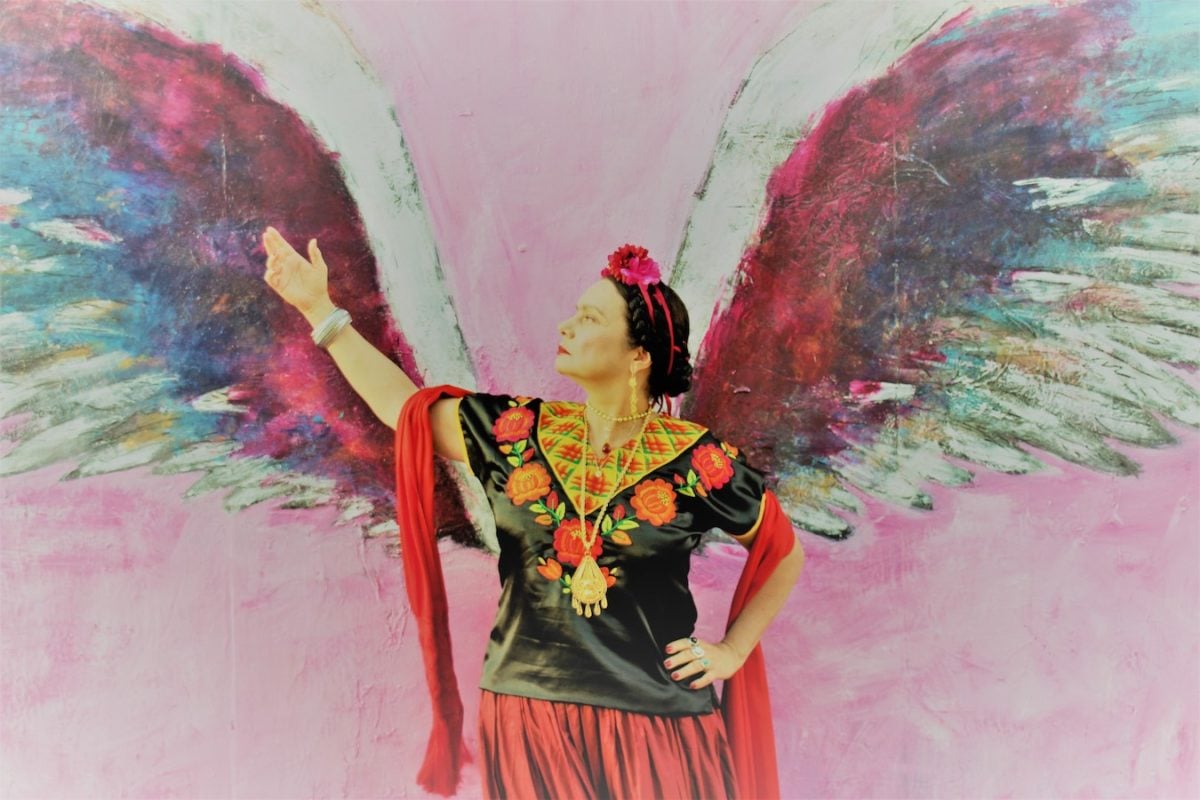Since the beginning of my career, I have made it my mission to tell authentic queer-female stories for the female gaze with a feminist point of view.
What initiated the spark of passion in me to write about Frida Kahlo was, as a lesbian Latinx, I relate to her courage and fearless determination to stand up to injustice and to be the voice of the voiceless through her art and political activities. And above it all, it was the fact that no one had dared to explore the last week of her life.
Frida Kahlo nobody knows
I wanted to show a part of Frida that no one knows about — her physical, emotional, and mental state of mind the week before she died. I explored her pain, fears, and lovers, her fervor for Diego Rivera, and her paintings.
My play ‘FRIDA – Stroke of Passion’ deals with the bisexual affairs of Frida Kahlo and a long list of famous female lovers: Chavela Vargas, the Mexican singer; Maria Felix, the Mexican film star; Josephine Baker, the famous cabaret dancer and singer; Tina Modotti, the photographer and model; and her last lover, Teresa Proenza, a Cuban spy.
Even though Frida had many affairs with men such as Leon Trotsky, Nicholas Murray, and Jose Bartolli, her affairs with women were always pushed under the carpet.

Odalys Nanin portrays Frida Kahlo in “Frida – Stroke of Passion.” Nanin wrote the play, which explores the last week of Kahlo’s life and her bisexual affairs. Photo: ‘Frida: Stroke of Passion.”
Protesting in her wheelchair
Sixty five years ago in 1954 a few days before her death, Frida Kahlo, in her wheelchair, showed up to a protest against CIA intervention in Guatemala and defended the rights of indigenous people.
Frida Kahlo advocated for equal rights for the poor, the under represented, the handicapped, the LGBTQ community, and for all women. Frida did this at a time when she was viewed as an extremists, a Communist, a Socialist, a fierce feminist, and revolutionary painter who, with her brush, depicted the suffering of women.
Masculine, feminine beauty
Never before had a painter and a woman dared to paint female suffering and the abuse they experienced. Frida cracked open her heart and painted 44 self-portraits without caring what society thought about it.
In fact, she went a step further. Frida stripped herself of the conventional women’s wardrobe and covered her crippled body with the indigenous dresses of the Oaxaca tribe. She used her Tehuana outfits, braided crown hairdo, and maquillage (makeup) to create a woman full of health and vibrant energy. She was a seducer who claimed “the only reason I go on living is to paint and to love.”
While women plucked their eyebrows thin and wore pencil tight dresses, Frida accentuated her bushy eyebrows, visible mustache, and flaunted her flowing wide embroidered skirts and huipiles (blouses). This enabled her to have both masculine and feminine beauty.
A true modern day Joan of Arc, Frida became a world icon by defying protocol and breaking conventional gender boundaries in a chauvinistic, male dominated society.
“FRIDA – Stroke of Passion” will be performed at the Casa 0101 Theater in Boyle Heights February 7-9 and 14-16.
